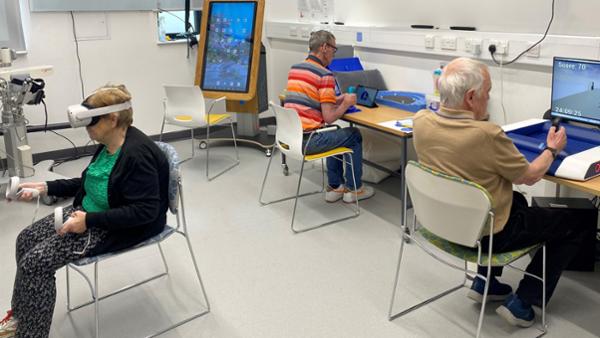But no-one is doing a damn thing about getting survivors EXACT REHAB PROTOCOLS to get to 100% recovery. All you get are shitworthy guidelines. Guidelines don't deliver repeatable recovery!
Everyone's talking about: Stroke rehab
With NICE recommending stroke victims undergo three hours of rehab a day, there’s an opportunity for the sector to step in as a key provider, finds Vicky Kiernander

New National Institute for Health and Care Excellence (NICE)
guidelines in the UK recommend stroke patients receive at least three
hours of rehabilitation a day, five days a week. This is a dramatic
increase from previous guidance of 45 minutes a day.(But it doesn't help if they are not EXACT PROTOCOLS! Will you people actually think about how you are getting survivors to 100% recovery? 3 hours a day doesn't cut it if all that is is guidelines!)
However, evidence shows that patients only receive around 14 minutes of physiotherapy a day.
Experts have welcomed the new guidance but question how feasible it will be for a stretched health service to deliver.
The impact of stroke can be profound and the months immediately after a stroke are key to recovery. Is this an opportunity for the health and fitness sector to demonstrate its ‘pivot to health’ by providing high quality stroke rehabilitation in the community? Can we be part of the solution?
The number of people surviving stroke is increasing and more people are living for longer with a disability.
We know the more rehab someone does after a stroke in terms of both volume and intensity, the better their outcomes(NOT GOOD ENOUGH! Survivors want full recovery!) and that the first three to six months after stroke is critical to recovery. However, most people receive minimal rehabilitation as therapists struggle to meet demand. On a typical hospital ward, there may be two therapists for 40 or more stroke patients and when patients are discharged, their homes are often not suitable for rehab work, so therapists are limited to the exercises they can prescribe.
In recognition of the challenge, for the last three years, the University of Strathclyde has been pioneering technology-based stroke rehabilitation. We run an eight-week programme from our technology-enriched rehabilitation hub to address the motor, cognitive and communication impairments caused by stroke. People also use the gym for two to three hours, multiple times a week.
Users tell us they feel safe, supported and confident. The attendance rate for the programme is approximately 85 per cent and it’s proven so popular that we have a waiting list.
Based on the success of the scheme, we’ve launched a rehabilitation hub at the stroke unit at University Hospital Wishaw with the support of NHS Lanarkshire. The hub is equipped with integrated technology, including VR treadmills, power-assisted equipment, balance trainers and upper-limb training systems, and also incorporates gamification, such as VR puzzles and problem-solving activities.
Instead of sitting in bed for hours, patients can use the hub under supervision five days a week, while benefiting from the encouragement of their peers and the social interaction of working in a group – something the health and fitness sector knows all about.
I’d love to see this model replicated in fitness facilities across the UK. They have the space, the exercise expertise and many staff are already trained to understand stroke. Unfortunately, they are often still perceived as places for the fit and healthy and it takes a very confident person post stroke to walk into a gym with their frame and get onto an exercise bike.
I’d like operators to engage with people post-stroke to find out how best they can support them. This could happen in smaller spaces with adapted equipment and ceiling hoists so they can perform balance work.
• For tips on how to set up a hub in your area, email cocreationrehab@strath.ac.uk
No comments:
Post a Comment